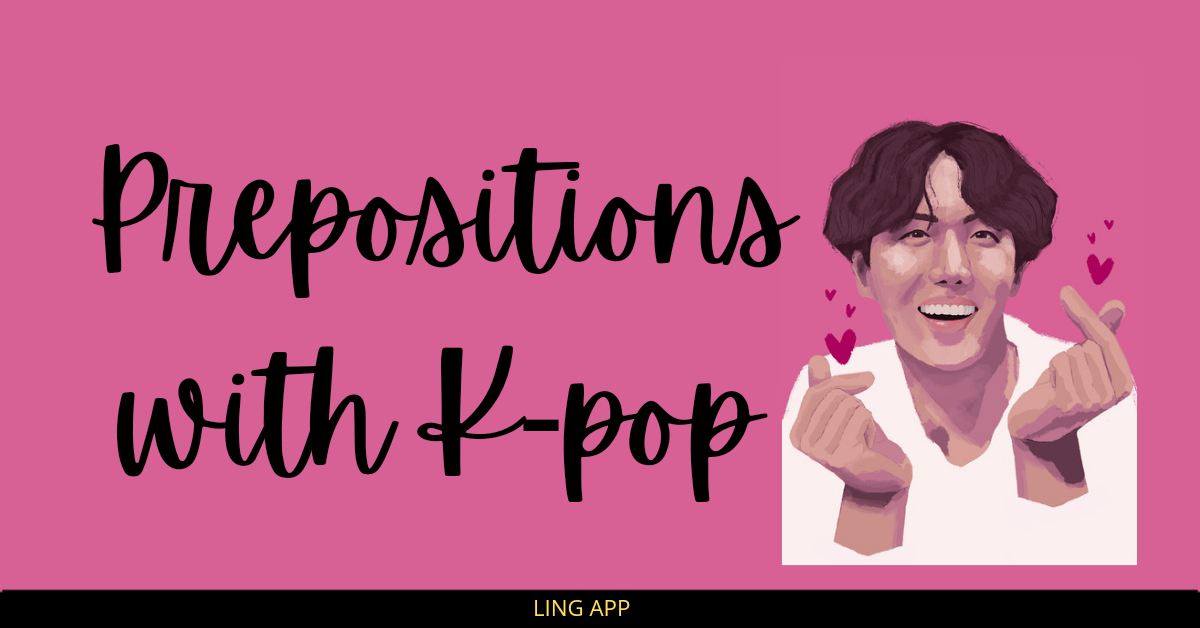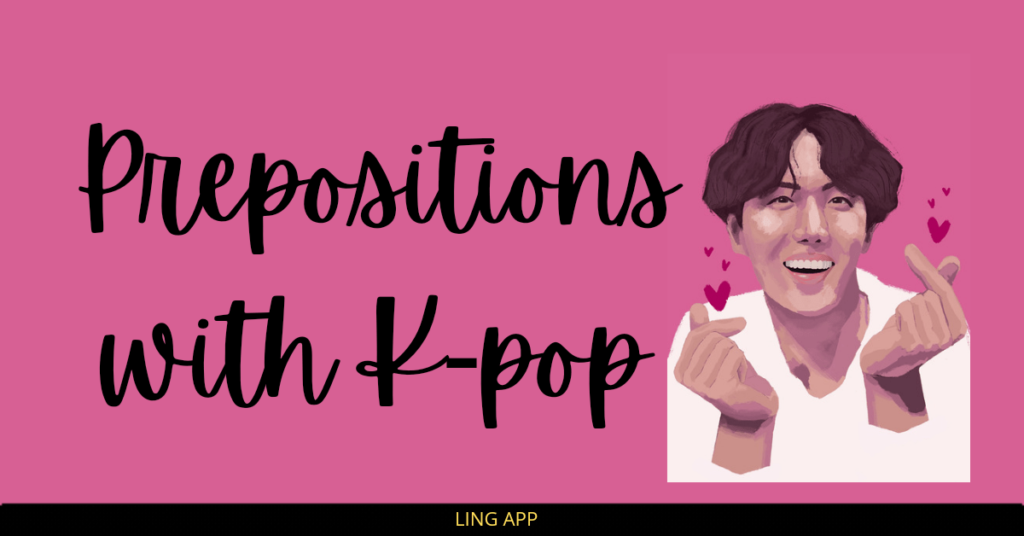Are you interested in learning all of the Korean prepositions? Do you know some prepositions but cannot make sentences with more? Do your sentences always feel incomplete because you have not used the proper prepositions? Well, if that’s the case, then worry no more. In this blog, we will walk you through all the essential Korean prepositions you need to know and use while making sentences, so let the learning begin. 시작 (sijag)!!!
Korean Language
Korean is the official language of South Korea and North Korea. It is a language of Asian heritage and is quite different from languages of Latin origin, for instance, English. Many people want to learn Korean because of K-pop and K-dramas. K-pop engages youth from all over the world in creative ways.
Different brands upload vlogs regularly, and a lot of effort is put into the direction and composition of the vlogs and songs to make them creative and appealing to people. The Korean language sounds different, but it becomes easier to study the language once the basics are learned.
Korean Grammar
Grammar in Korean is relatively different from English in its sentence structure and the words in a sentence. There are different rules for other words, but the basic sentence structure in Korean follows the SOV (Subject-object-verb) order.
Korean Prepositions
Prepositions refer to the words/ phrases that connect different nouns within a sentence. For instance, in the sentence “The cat is on the table,” the cat and the table are nouns and the word “on” provides a connection between both and is a preposition. Preposition tells about the position of a noun if it’s under, over, above, or beneath, etc.
Instead of using the word prepositions in Korean, “postposition” is used. This is because these specific words are used after the words to change them. The word “pre” means “before,” and the word “post” refers to “after” in English. As the words are placed in front of the other words, they are called Postpositions in Korean. Prepositions are called 조사 (josa) in Korean.
Like English prepositions, Korean prepositions link nouns, pronouns, and other phrases. Korean phrases are slightly different from English phrases. The preposition for three words (세 단어) cannot be found in English. The same is the case with the postposition for two words (두 단어).
Example
The sentence “cat is on the table” is “고양이가 테이블 위에 있다.” In this sentence, 고양이가 refers to the cat, 테이블 means table, 위에 is the word for the preposition “on” in Korean and 있다 refers to the state of being. Since the word describing the cat is placed after the table therefore it is called a postposition.
“위에 보다 많은” (wi e bo da manh eun) means “more than /above.” Two phrases can be taken out of this 보다 많은 (bo da manh eun) and 보다 위에 (bo da wie), which more or less means the same thing. These are used to indicate that a certain thing is better than the other. It could be both in terms of quantity or quality.
Object Of Preposition
There are different words as well as phrases which each preposition introduces. Those are called the objects of prepositions. Postpositions are written after the object of prepositions (or postpositions in this case). It is not a rigid word order and can be changed when needed but generally, it is the most commonly used word order.
Example
Taking the same example as mentioned above, “table” will be the object of a preposition. In the phrase “테이블 위에” the postposition is used after the object of a preposition.
“에 대한/에 관한 – e dae han e gwan han” are the prepositions for “about.” The sentence 생활에 관한 학문적 자료 means “Academic data on life.” The postposition 에 관한 (on/ about) is placed after the object of prepositions, i.e., 생활 (life).
Some Korean Prepositions
Check the table below to get a complete list of all the Korean prepositions.
| Korean Prepositions | Romanized Hangul | English Translations |
| 에 대한 | e daehan | For |
| 에 | e | At |
| 저편에 | jeopyeon-e | On The Other Side |
| 으로 | eulo | At |
| 으로 | eulo | By |
| 동안 | dong-an | During/ For |
| 아래에 | alaee | Under |
| 앞에 | ap-e | Before |
| 너머 | neomeo | Beyond |
| 뒤떨어져 | dwitteol-eojyeo | (Lagging) Behind |
| 보다 아래에 | boda alaee | Below |
| 에 | e | To |
| 에도 불구하고 | edo bulguhago | Despite |
| 아래로 | alaelo | Under |
| 로써 | losseo | As |
| 전에 | jeon-e | Before |
| 하지만 | hajiman | However |
| 가운데 | gaunde | Middle |
| 약 | yag | Approximately |
| 옆에 | yeop-e | Next |
| 사이에 | saie | Between |
| 보다 많은 | boda manh-eun | More |
| 밑에 | mit-e | Under |
| 를 위해 | leul wihae | For |
| 건너서 | geonneoseo | Across |
| 로써 | losseo | As |
| 그러나 | geuleona | But |
| 뒤에 | dwie | Behind |
| 에서 | eseo | At |
| 안 | an | Not |
| 제외하고 | je-oehago | Except |
| 에 의해 | e uihae | By |
| 사이에 | saie | Between |
| 부터 | buteo | From |
| 에 관한 | e gwanhan | To About |
| 주위에 | juwie | Around |
| 가로질러 | galojilleo | Across |
| 반대하여 | bandaehayeo | Against |
| 처럼 | cheoleom | Like |
| 뒤에 | dwie | Behind |
| 보다 위에 | boda wie | Above |
| 후에 | hue | Later |
| 까지 | kkaji | Till |
| 에 | e | To |
| 향하여 | hyanghayeo | Towards |
| 아래에 | alaee | Under |
| 이후 | ihu | After |
| 외부에 | oebue | Outside |
| 의 | ui | Of |
| 와 다른 | wa daleun | Different From |
| 위쪽으로 | wijjog-eulo | Upwards |
| (위)에 | (wi)e | (Above |
| 이래 | ilae | Since |
| 을 빙 돌아 | eul bing dol-a | Round |
| 겉에 | geot-e | Outside |
| 보다 | boda | See |
| 내부에 | naebue | Inside |
| 이내에 | inaee | Within |
| 각 | gag | Each |
| 을 돌아 | eul dol-a | Round |
| 에서 멀리 | eseo meolli | Far From |
| 맞은편에 | maj-eunpyeon-e | Opposite |
| 바깥쪽에 | bakkatjjog-e | On The Outside |
| 안에 | an-e | In |
| 위에 | wie | Above |
| 더하기 | deohagi | Per |
| 통해 | tonghae | Through |
| 와 함께 | wa hamkke | With |
| 로 | lo | As |
| 를 통해 | leul tonghae | Through The |
| 이 없으면 | i eobs-eumyeon | Without |
| 멀리 | meolli | Far |
| 와 거리가 먼 | wa geoliga meon | Far From |
| 안에 | an-e | In |
| 내부에 | naebue | Inside |
| 다음에 | da-eum-e | Next Time |
| 바깥쪽에 | bakkatjjog-e | On The Outside |
| 의 밖에 | ui bakk-e | Outside |
| 을 제외하고 | eul je-oehago | Except |
| 경우하여 | gyeong-uhayeo | By Case |
| 또한 – | ttohan – | In Addition – |
| 때문에 | ttaemun-e | Because |
| 아주 가까이에서 | aju gakkaieseo | Very Close |
| 때문에 | ttaemun-e | Because |
| 대신 | daesin | Instead |
| 에 가까운 | e gakkaun | Close To |
| 거의 | geoui | Almost |
| 한 | han | One |
| 바로옆에 | baloyeop-e | Right Next To |
| 에 앞서 | e apseo | Prior To |
| 없이 | eobs-i | Without |
| 에 따라 | e ttala | Based On |
| 와 달리 | wa dalli | Unlike |
| 까지 | kkaji | Till |
| 위로 | wilo | Consolation |
| 이것 | igeos | This |
| 그것 | geugeos | That |
| 이것들 | igeosdeul | These |
| 그것들 | geugeosdeul | Those |
| 의 앞쪽에/ 앞에 | ui apjjog-e(ap-e) | In Front Of |
| 에도 불구하고 | edo bulguhago | Despite |
| 대신(대표)하여 | daesin(daepyo)hayeo | On Behalf Of |
| 위에 | wie | Above |
| 지시 전치사 | jisi jeonchisa | Directive Preposition |
| 게다가 | gedaga | Besides |
| 일 뿐 아니라 | il ppun anila | Not Only |
| 먼저 | meonjeo | First |
| 까지 | kkaji | Till |
| 마찬가지로 | machangajilo | Likewise |
| 에 대하여 | e daehayeo | About |
| 당 | dang | Per |
| 다음 | da-eum | Next |
| 의 | ui | Of |
| 에서 가까이 | eseo gakkai | Close to |
| 왼쪽 | oenjjog | Left |
| 오른쪽 | oleunjjog | Right |
| 대조적으로 | daejojeog-eulo | In Contrast |
K-Pop Corner

The easiest way to learn Korean is by watching Korean dramas and music videos by K-pop. There are different words that can be learned from those songs to form sentences. Here is a table for you with prepositions used in songs so that you can learn while having fun:
| Korean Sentences | English Translations | Artist | Song Name | Preposition Used |
| 왼쪽 가슴이 너무 아파 oenjjog gaseum-i neomu apa | My left chest hurts so much | K.Will | 왼쪽 가슴 (Left Heart) | 왼쪽 (Left) |
| 바람처럼 이 먼지처럼 balamcheoleom i meonjicheoleom | Like the wind, like this dust | Lee Hi | 내 사랑 (My Love) | 처럼 (like) |
| 위에만 바라보다 wieman balaboda | Look up only | Park Ji Hoon | 위에만 ( 바라보다 (Look up only) | 위에 (up) |
| 오른쪽 주머니 속에 있었네 너의 온기가 oleunjjog jumeoni sog-e iss-eossne neoui ongiga | It was in my right pocket, your warmth | J.Shark | 오른쪽 주머니 (Right Pocket) | 오른쪽 (Right) |
| 천일동안 난 우리의 사랑이 영원할 거라 믿어왔었던거죠 cheon-ildong-an nan uliui salang-i yeong-wonhal geola mid-eowass-eossdeongeojyo | For a thousand days, I believed our love would last forever | Lee Seung Hwan | 천일동안 (For a thousand days) | 동안 (For/ During) |
위 아래 위 위 아래 위 아래 위 위 아래 wi alae wi wi alae wi alae wi wi alae | up down up up down up down up down up top down | EXID | 위 아래 (Up and Down) | 위 아래 (Up and Down) |
| 나 어디론가 멀리멀리 na eodilonga meollimeolli | I’m somewhere far away | G.Soul | 멀리멀리 (Far far away) | 멀리 (far) |
너 없이 나 멀리멀리 neo eobs-i na meollimeolli | Without you far away | G.Soul | 멀리멀리 (Far far away) | 멀리 (far) |
나 혼자 여기 멀리 na honja yeogi meolli | I’m alone here. Far… | G.Soul | 멀리멀리 (Far far away) | 멀리 (far) |
하지만 너를 사랑하고 있어 hajiman neoleul salanghago iss-eo | But I love you | SG Wannabe | 하지만 (But) | 하지만 (But) |
Wrapping Up

I hope by now you must be able to make Korean sentences using prepositions in Korean. You can use these prepositions in your everyday conversation. If you want to speak Korean like a native, then make sure to check out blogs on Ling App by Simya Solutions. We also have a blog for How To Ask Questions In Korean and Directions In Korean.
Ling App has countless ways of learning Korean and other languages. You can take any course and get access to outstanding lessons. Every lesson is carefully designed and compiled by professional native speakers to provide the most accurate information.
Happy Learning!




















